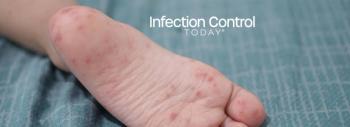
What Lies Beneath: Why Borescopes Are Essential for Verifying Surgical Instrument Cleanliness
Despite their smooth, polished exteriors, surgical instruments often harbor dangerous contaminants deep inside their lumens. At the HSPA25 and APIC25 conferences, Cori L. Ofstead, MSPH, and her colleagues revealed why borescopes are an indispensable tool for sterile processing teams, offering the only reliable way to verify internal cleanliness and improve sterile processing effectiveness to prevent patient harm.
Visual inspection of the outsides of instruments cannot guarantee the cleanliness of lumened surgical instruments. At the 2025 Healthcare Sterile Processing Professionals Association (HSPA25) Annual Conference & Expo, held in Louisville, Kentucky, Cori L. Ofstead, MSPH, explained how borescopes offer a critical line of defense.
In a recently published study in
The results were alarming:
- 100% of instruments had visible debris or discoloration inside.
- 95% showed rust-colored patches, often with a brown or orange appearance.
- 88% contained visible chunks—including yellow, black, or white debris.
- 73% harbored fibrous fragments like lint or broken brush bristles.
Even after up to 3 additional rounds of recleaning, none of the instruments came fully clean.
Let that sink in. You can follow the IFU exactly, use the right detergent, brush, and washer, and still fail to achieve internal cleanliness. That is not a technician error. That’s a design and systems problem.
What’s Causing This?
The study revealed that architectural complexity is the key issue.
These instruments had:
- Lumen diameters that changed multiple times within a single device.
- Deep grooves, ridges, and dead ends that brushes couldn’t reach.
- Hidden internal compartments only visible with a borescope.
- Suction valves and shafts that prevented flushing or visual inspection.
For example, a brand’s footed attachment had ridges and ledges not visible from the outside. Another brand’s shaver had an internal cavity that was nearly impossible to access, even with the borescope.
What About Recleaning?
The study tested the impact of reprocessing dirty instruments:
After 1 recleaning, 75% of the instruments were reinspected.
After 2 rounds, 72.5% were rechecked.
After 3 recleanings, 45% were reinspected.
Even then, 100% still had visible defects. In some cases, new contaminants appeared—like brush bristles or droplets—during the recleaning process. One irrigation lumen even had a chunk of yellow debris that shifted location, proving it could potentially move into a surgical site.
Swab testing under borescope guidance revealed that soil could be removed from grooves only when swabbing was performed under direct visualization, a process that is impossible during normal processing without a borescope.
What This Means for You
This study confirms what many SPD professionals have long suspected: IFUs are not always sufficient, and instrument design often prevents thorough cleaning. You are being asked to do the impossible, and it’s time for facilities and manufacturers to step up.
The researchers recommended:
- Routine use of borescopes for lumened instruments.
- Enhanced staff training on brush selection and technique.
- Switching to lint-free materials to prevent introducing new debris.
- Returning flawed instruments to manufacturers for replacement.
- Better collaboration between infection prevention, SPD, and vendors.
To examine the findings further, Infection Control Today® (ICT®) spoke with 3 of the authors. This is the second in a series of 4 articles from that interview. Find the first installment of the interview
The authors include Cori L. Ofstead, MSPH; Brandon M. Gantt, MHA, CRCST, CHL, CER, LSSGBH; and Jill E. Holdsworth, MS, CIC, FAPIC, NREMT, CRCST, CHL.
ICT: How do borescopes change the game for sterile processing departments when verifying the internal cleanliness of lumened instruments?
Cori L. Ofstead, MSPH: The manufacturers and standards-issuing bodies universally recommend that you use visual inspection with lighted magnification to inspect surgical instruments. The guidelines say to inspect the external surfaces of the instruments and devices to ensure they're clean and free from defects before sterilizing them. Now, if you are a person with good eyes, you can see the outsides of instruments pretty well, and magnification is excellent because it can help home in and highlight defects. But nobody, no matter how good their eyesight is, can see inside the instruments.
That's where a borescope comes in, because when technicians clean surgical instruments that have lumens and dead ends, the person working in decontamination doing the cleaning is usually a different person than the person on the clean side who is responsible for inspection and assembling the tray. The person on the clean side hopes the person in decontamination did a good job, but they understand that it's difficult to clean these items, and they often don't come clean.
The tech who is inspecting instruments and assembling the trays inspects the instruments, and they may perform tests to verify that blood, tissue, and other contaminants are gone, because they know that if they're still present, it could interfere with sterilization. During inspection, they may bang the instrument on the table to see what comes out, or flush it with water or air or alcohol to see what comes out, or poke a swab or brush in there to see what comes out. If you think about it, if there's blood or tissue in there after cleaning and it didn't come out when the tech was cleaning it, then it didn't come out easily.
Why would it come out easily on the clean side? Because if it were easy to get it out, they would have gotten it out during cleaning. That's the point of borescopes. You can look inside to ensure that this visible debris and nastiness are gone before it gets sterilized and used on the next patient. It's unfathomable to me that we're recommending visual inspection on the outside of instruments that you can see when you're cleaning them, but then we don't require it for the inside that you can't see. I don't understand how this is even an issue.
ICT: Your findings indicated that some outcomes were more alarming than expected—can you describe one of the most surprising or concerning cases?
CLO: First, we found defects in every instrument, and most of them had chunks of yellow or white stuff that looked to us to be biological, which we felt was disgusting, as this was chunks of somebody! Most of the instruments had a rusty brown or orange-colored residue inside. That's troubling, but we did expect it, because of what Jahan Azzizi, CBET, had found at University of Michigan and what we had found in the pilot with Steven J. Adams [“
It wasn't surprising when recleaning failed to remove the debris, as we had come to expect that recleaning wouldn't work. Occasionally, we would see yellow or orange chunks that disappeared or moved to a different location after recleaning. This, to me, was the most disturbing thing, because it meant that foreign tissue or baked-on blood or whatever that stuff was, can soften and be expelled under certain conditions. That's troubling because we can't control exactly when or how that's going to happen. In this case, it occurred while we were conducting a study and monitoring it, but it could also happen within a patient if it stays wet for a certain amount of time, and there's enough friction to remove it. To me, that's the most troubling part of the study.
When we first saw rust-colored components, we didn’t know whether some devices had components that were copper, bronze, or something of that color. However, when we used sterile swabs to rub on the surfaces under borescope guidance so we could see exactly where we put the swab, that rust-colored stuff came off on the swab. This is troubling because if that gunk can come off, it can come off anywhere. However, when you insert a brush, it may not be able to clean out a groove because the groove is too small. Without having a borescope in there, you would never know that there was more gunk down in those grooves.
When you compare the architecture of the outside of instruments to the inside, it is almost always the case that the outside appears very smooth and polished. If there are rough surfaces, it's intentional, such as a grip area or similar feature, and it looks nice. It's friendly and easy to clean. Then you look inside, and that's not what you see. It's very rough machining and grooves that don't line up, with nooks and crannies where it's obvious that there's no way you could get it cleaned down in there. To me, it seems that companies design these instruments so that the people who are using them, like the surgeons, or maybe the periop[erative] people who would buy them, say, “This looks nice. This is fun. This is easy,” and nobody would ever know that the inside is a very complex nightmare.
Newsletter
Stay prepared and protected with Infection Control Today's newsletter, delivering essential updates, best practices, and expert insights for infection preventionists.






